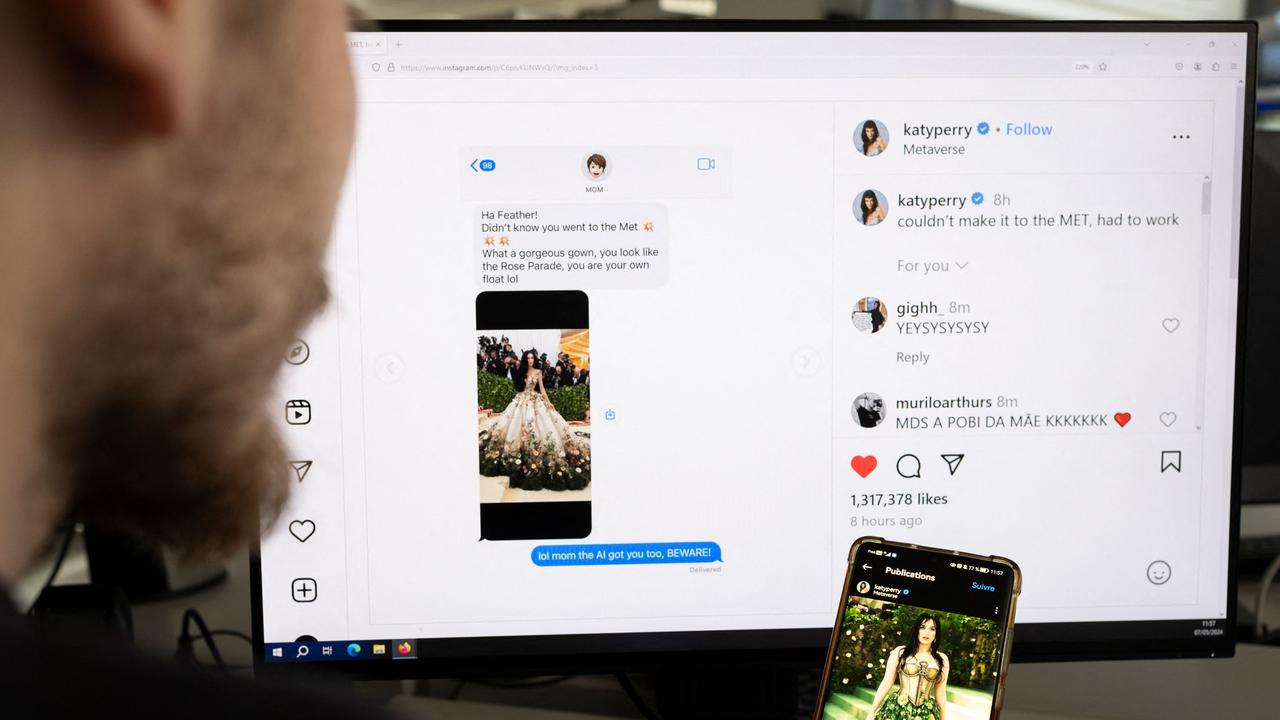TikTok starts labelling AI-generated content to fight misinformation
The video platform says it wants its users to know ‘what is fact and what is fiction’ as more AI-generated images dupe social media users across the world

READING LEVEL: ORANGE
TikTok has started to label content created using artificial intelligence (AI) in the fight against false information and deepfakes.
“AI enables incredible creative opportunities, but can confuse or mislead viewers if they don’t know content was AI-generated,” the company said in a statement. “Labelling helps make that context clear.”
The company had already been labelling AI-generated content created using its own AI tools, TikTok AI effects, for the past year but was now also starting to label AI-generated content made from outside its platform.
The move has become part of a wider movement in the technology industry to protect social media users against misinformation and fake news as the technology becomes more difficult to spot.

In February, Facebook and Instagram’s parent company, Meta, announced that it was working with industry partners on technical standards that would make it easier to tell whether images, and eventually video and audio, were generated using AI tools.
Google also said last year that AI labels were coming to YouTube and its other platforms.
In October last year, U.S. President Joe Biden called for the digital watermarking and labelling of AI-generated content as part of an executive order in the fight against misinformation.
HOW WILL TIKTOK LABEL AI-CONTENT?
TikTok has teamed up with the Coalition for Content Provenance and Authenticity and will use their Content Credentials technology to signal whether AI has been used in content.
The technology enables them to attach metadata to content in order to instantly recognise and label AI-generated texts. TikTok said it had already started using the technology on images and videos and would soon apply it to audio-only content.

Over the coming months, Content Credentials will also be attached to new submissions made on TikTok. The credentials will stay on the content when downloaded and will help people learn when, where and how the content was made or edited.
TikTok said it was the first video-sharing platform to put the credentials into practice. The company said it was joining the Adobe-led Content Authenticity Initiative to help promote the use of the credentials throughout the wider technology industry.
TikTok’s policy in the past had been to encourage users to label content that had been generated or significantly edited by AI. It also required users to label all AI-generated content where it contained realistic images, audio, and video.
“Our users and our creators are so excited about AI and what it can do for their creativity and their ability to connect with audiences.” Adam Presser, TikTok’s Head of Operations & Trust and Safety told ABC News. “And at the same time, we want to make sure that people have that ability to understand what fact is and what is fiction.”

DID KATY PERRY ATTEND THE MET GALA?
The news comes as social media users were tricked into thinking that Katy Perry and Rihanna attended this year’s Met Gala.
Deepfake images showing several celebrities at the Metropolitan Museum of Art’s annual fundraiser quickly spread online Monday and early Tuesday.
While some eagle-eyed social media users spotted signs the images were AI generated, others were fooled — including Perry’s own mother. Hours after at least two AI-generated images of the singer began swirling online, Perry reposted them to her Instagram, accompanied by a screenshot of a text that appeared to be from her mum complimenting her on what she thought was a real Met Gala appearance.
“lol mum the AI got to you too, BEWARE!” Perry responded in the post.

Meanwhile, a fake image of Rihanna in a stunning white gown embroidered with flowers, birds and branches also made its rounds online. Rihanna was originally a confirmed guest for this year’s Met Gala, but Vogue representatives said that she would not be attending before they closed the red carpet Monday night.
While the source or sources of these images is hard to lock down, the realistic-looking Met Gala backdrop seen in many suggests that whatever AI tool was used to create them was likely trained on images of past events.

This is far from the first time we’ve seen generative AI, a branch of AI that can create something new, used to create phony content. Image, video and audio deepfakes of prominent figures, from Pope Francis to Taylor Swift, have gained loads of hits online before.
Experts have said the ability to create fake content that is so convincing highlights growing concerns that AI could be misused in order to carry out scams, identity theft or propaganda, and even falsely influence how people vote at elections.
POLL
GLOSSARY
- deepfakes: artificial images, videos or audio of a real person made by AI that creates an extremely realistic but false impression of them doing or saying something
- context: the situation surrounding something
- artificial intelligence (AI): the ability of a digital computer to perform tasks that normally require human intelligence, often involving problem solving and decision making
- digital watermarking: embedding something in a file so that it can be identified as a certain type of content
- metadata: data that describes other data, an example being keyword tags
- propaganda: biased or misleading information used to promote a political cause or point of view
EXTRA READING
Cub reporters sniff out fake news
TikTok biggest time-waster for kids
AI predicts the royal children as adults
QUICK QUIZ
1. Why is TikTok labelling AI-generated content?
2. Which other platforms have started addressing this issue?
3. What is the name of the technology TikTok is using to spot AI-generated content?
4. Deepfakes made it seem like which two celebrities attended this year’s Met Gala?
5. Why are tech experts concerned about AI-generated content?
LISTEN TO THIS STORY
CLASSROOM ACTIVITIES
1. What are the positives?
In this news story we learn about some of the negative ways in which artificial intelligence is or could be used. However, the technology also has positive applications. Brainstorm a list of ways that AI can improve people’s lives now and in the future. Choose one of your positive uses and write a paragraph to elaborate on why or how it would make the world better.
Time: allow 15 minutes to complete this activity
Curriculum Links: English; Technologies
2. Extension
Write a fictional short-story where AI has drastically changed the world, for better or for worse.
Time: allow 40 minutes to complete this activity
Curriculum Links: English
VCOP ACTIVITY
Read this!
A headline on an article – or a title on your text – should capture the attention of the audience, telling them to read this now. So choosing the perfect words for a headline or title is very important.
Create three new headlines for the events that took place in this article. Remember, what you write and how you write it will set the pace for the whole text, so make sure it matches.
Read out your headlines to a partner and discuss what the article will be about based on the headline you created. Discuss the tone and mood you set in just your few, short words. Does it do the article justice? Will it capture the audience’s attention the way you hoped? Would you want to read more?
Consider how a headline or title is similar to using short, sharp sentences throughout your text. They can be just as important as complex ones. Go through the last text you wrote and highlight any short, sharp sentences that capture the audience.

